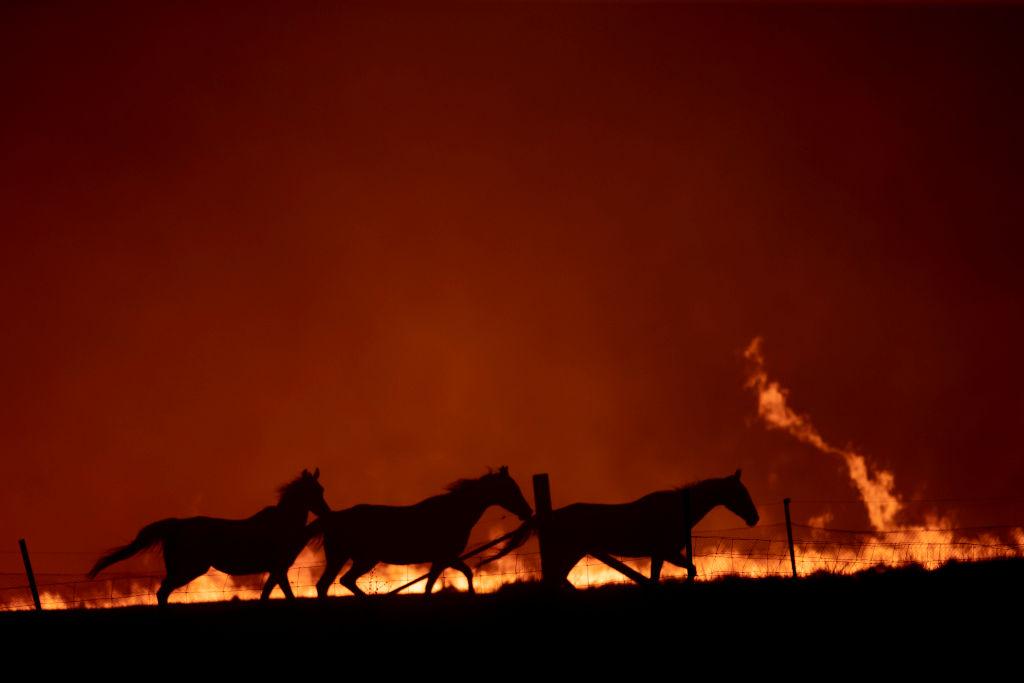The latest United Nations scientific synthesis report on climate change, released yesterday, warns that significant additional global warming is already locked in and catastrophic climate impacts are rapidly becoming more likely. What will this mean for Australia? The government has already produced Australia’s first climate and security risk assessment to help answer that question. It was considered by cabinet late last year. While the assessment is classified, ministers’ public comments since then suggest that its findings are deeply worrying.
Home Affairs Minister Clare O’Neil warned at the National Press Club in December that we need to prepare for a future in which climate disasters occur simultaneously in Australia, in the region and across the planet, potentially leading to ‘unmanageable’ cascading impacts on our national security. Such warnings are not to be taken lightly.
The risk assessment has provided ministers with a shared understanding of the enormous challenges Australia faces from global and regional climate disruptions. Senior bureaucrats in government departments are working to elaborate the threats and responses, including at the Department of Defence in parallel with the defence strategic review; at the Department of Foreign Affairs and Trade, which is revising Australia’s international development policy; and at the Department of Home Affairs in the newly established National Resilience Taskforce. This work will do more to position Australia to meet the enormous climate-related challenges ahead than has been achieved under any other government.
While the previous government’s climate denialism had a chilling effect on public servants, Prime Minister Anthony Albanese and his cabinet now face the opposite problem of ensuring coordination and coherence across government. Departments are each developing their own methodologies and underlying assumptions to identify and formulate responses to the risks that concern their organisational mandates, even though the same risks often cut across multiple agencies. This approach is inefficient and risks policy incoherence.
The government must promote greater coordination across bureaucracies, agreeing on shared methodologies and criteria for prioritising modelling requests and identifying the threats to Australia’s interests that require joined-up responses. Given that many climate risks have both domestic and international dimensions and cut across multiple departmental portfolios, the Department of the Prime Minister and Cabinet, conveying the direct authority of the prime minister, should play the major governance role in this coordination, with Home Affairs leading on efforts to strengthen Australia’s resilience to the emerging threats.
Releasing a declassified version of the risk assessment will fill an important gap in the public’s awareness of climate risks originating offshore, which may ultimately be as damaging as the domestic impacts. They include disruptions to Australian exports, biosecurity threats and regional instability. Some of Australia’s closest allies, such as the US and UK, have already produced declassified versions of their own climate risk assessments and have engaged their publics in discussing the implications. Australia must do the same.
Delivering the risk assessment’s uncomfortable messages to Australians won’t be easy for the government, but it will not be starting from scratch. The catastrophic 2019–20 bushfires—which directly affected 60% of Australians—and recent floods have given the public a strong sense of what to expect as the climate continues to warm: increasing national-scale disasters resulting from simultaneous record-setting events that have cascading impacts across society. The vast majority of Australians are now concerned about climate change and want government action to limit the impacts.
The Albanese government has been committed to honesty about the challenges we face as the climate continues to warm. This must now extend beyond the domestic consequences to include the international impacts, and it must leverage Australian creativity, enthusiasm and practical know-how to build a more resilient nation. The government has a fundamental responsibility to inform and educate the Australian public about these rapidly emerging regional risks. It’s also a pragmatic way to build public support for the initiatives and investments that will be needed in the years ahead.
The UN report does hold out hope that even if temperatures rise to dangerous thresholds, it’s still possible with rapid and deep emissions cuts and deployment of techniques to capture and store carbon, such as reforestation, to bring temperatures back down below the thresholds over time. Nevertheless, it’s clear that we need to start preparing now for the inevitable impacts of climate change.
The release of a declassified version of the climate and security risk assessment is not just a matter of transparency and accountability; it is a critical step in helping Australians understand the gravity of the climate crisis and the potential impacts on their communities.
While the challenges posed by climate change are significant, it’s important to remember that we have the technology, knowledge and resources to address them. By working together, governments, businesses and individuals can reduce greenhouse gas emissions, adapt to the changing climate and build more resilient communities. Australia is well positioned to take a leadership role in this effort, with its highly skilled workforce, abundant natural resources and long history of innovation. By confronting the risks of climate change head-on and taking bold action to address them, we can create a more secure future for ourselves and future generations.


